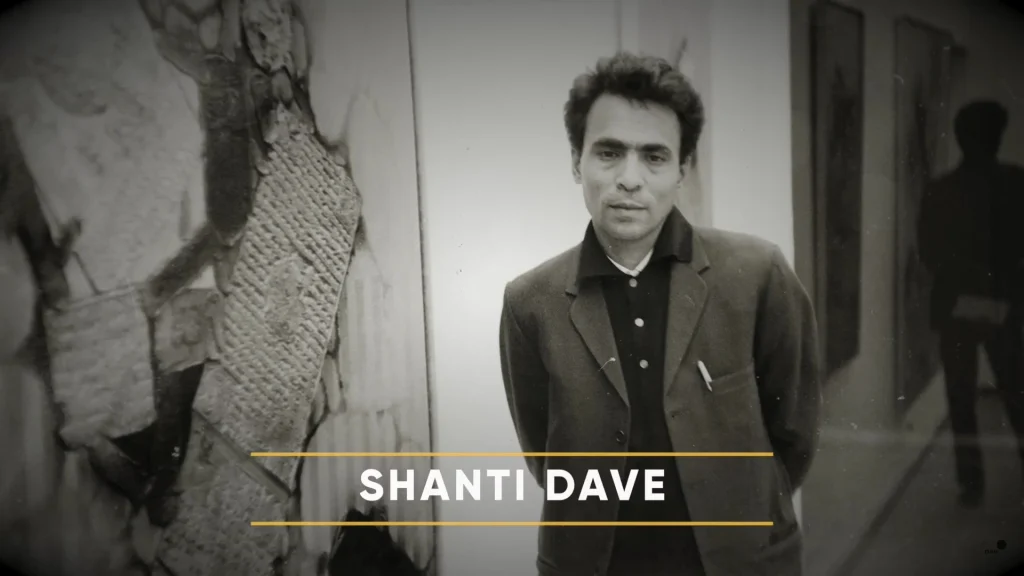“My paintings, with their pulsating energy, vibrant colours, and interesting textures, are a homage to the kala (art) of India. They are an ode to memories, to the sights and sounds of the ruins that I saw and absorbed as a child while growing up in Gujarat. Viewers can perceive it in their own manner—it is a reason why I rarely titled my work—but they can’t mistake the jugalbandi that happens when myriad elements come together on a canvas.”
– Shanti Dave
An upcoming exhibition at the Delhi Art Gallery (DAG) in India is going to present over 80 works by the painter and sculptor Shanti Dave. Commencing on 15th July, 2023 the exhibition, curated by Jesal Thacker, is titled “Shanti Dave: Neither Earth, Nor Sky” and it charts the magnificent career of India’s first major abstract expressionist. Born in 1931 in Badpura village of Gujarat, Shanti Dave began his painterly journey by painting signboards and billboards for films in Ahmedabad. Later he enrolled himself at the newly inaugurated Faculty of Fine Arts, M.S. University, Baroda, where he studied under the eminent artist-teacher N.S. Bendre.
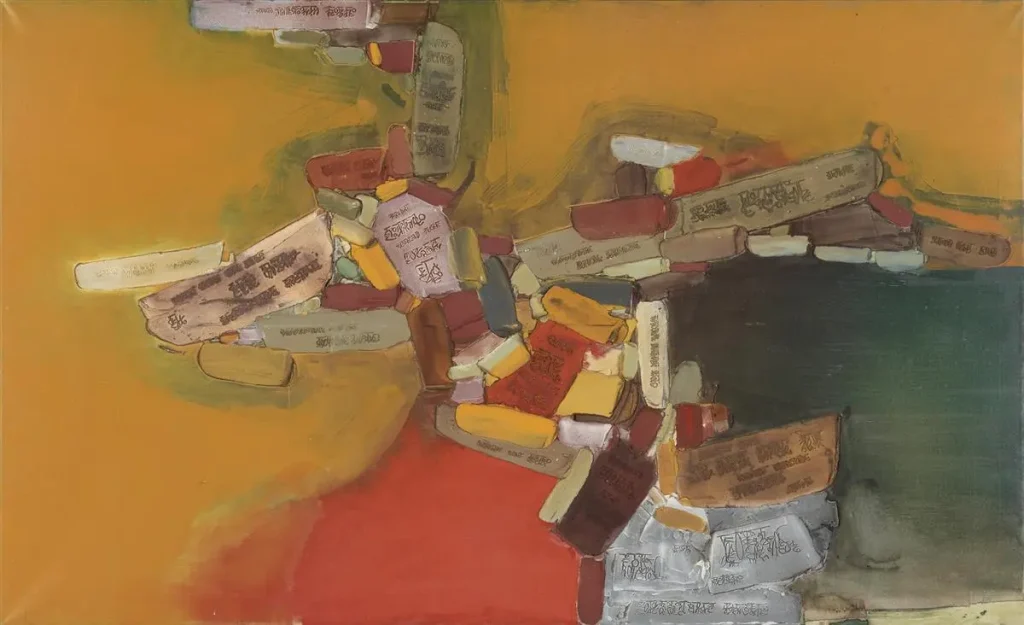 Time Being and Timelessness. 1970. Acrylic on canvas. Courtesy of Invaluable.
Time Being and Timelessness. 1970. Acrylic on canvas. Courtesy of Invaluable.
During his time in Baroda, Dave – inspired by the Bombay Progressive Artists Group – co-founded the Baroda Group of Artists in 1957 with figures like Jyoti Bhatt, G.R. Santosh, Ratan Parimoo, K. G. Subramanyan, etc. Renowned for his large murals, Dave gained recognition as an artist quite early in his career by winning the national award of the Lalit Kala Akademi for three years in a row, in 1956, ’57 and ’58. Later he was commissioned by Air India to decorate its offices in Frankfurt and Sydney, however amongst these his favourite work is a mural he painted for the JFK airport in New York. The mural at the airport was published by the New York Times on its front page on 5 February 1964 under the title, Little Gujarat.
After an initial period of exploration in his artistic journey, Shanti Dave found his foothold in abstraction which focused on heavy experimentation with different mediums and methods to create his own distinctive style. He is known for his use of the encaustic media employing a mixture of beeswax, linseed oil, varnish, and zinc oxide to create an impasto which results in captivating paintings in high relief. These high-relief textures lend his giant canvases an earthy topography and cartographic quality.
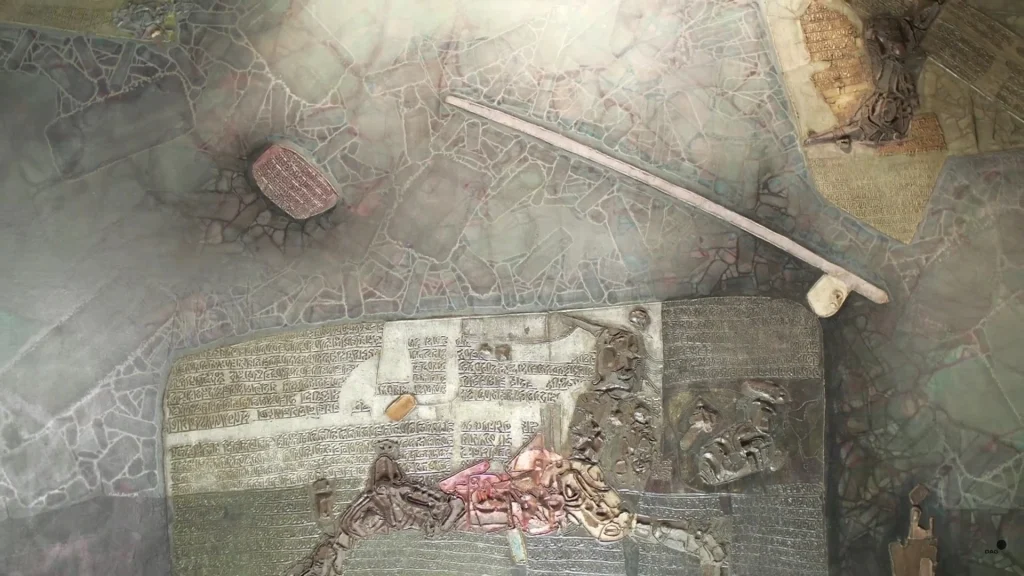 Untitled, 1975. Oil and Encaustic on Canvas. Courtesy of DAG.
Untitled, 1975. Oil and Encaustic on Canvas. Courtesy of DAG.
For instance, his painting Untitled (1975) immediately gives the sense of a map belonging to a strange topography. The thickly textured surface along with its dull colour palette evokes a sense of surprise while simultaneously inviting a meditative gaze which is supplemented by the interesting play of light and darkness. As one commentator notes, Dave’s paintings do not set out to prove or state anything. They are only a means of expressing emotions that are indescribable in words or any other way.
And yet, a philosophical preoccupation with ‘word’ permeates his oeuvre. Jesal Thacker notes that Dave’s visual language has been a “persistent exploration of the word or akshara, the theory of sound and the aesthetics of bhava—emotion arising from form and colour—instilling each composition with a rasa. Dave acknowledges shakti as his guiding force in experiencing and expressing the akshara, led by the chance of mediums and compositions.”
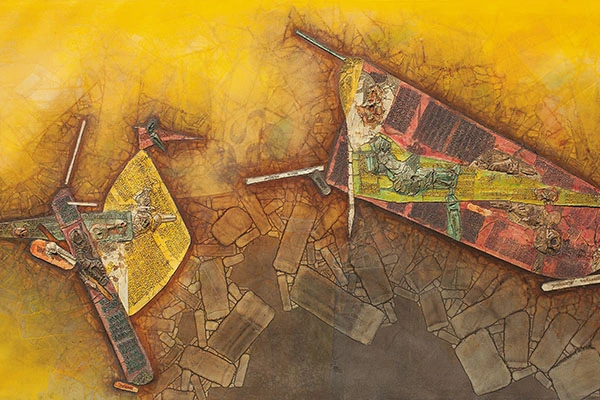 Untitled, 1974. Oil and Encaustic on Canvas. Courtesy of Forbes India.
Untitled, 1974. Oil and Encaustic on Canvas. Courtesy of Forbes India.
In conjunction with this, Dave’s paintings involve a consistent use of a unique undecipherable script which he composed out of Devanagari script and Nepalese languages placing him among the pioneers of calligraphic Modernism prevalent in the South Asian subcontinent during the 1960s. This script evokes a sense of an ancient world. Looking at his paintings it “feels like a civilisation discovered, an alien landscape laid out before one’s eyes, a bird’s eye view of a world not ours.” The viewer is at once shocked and wonders what went inside the mind of Dave to produce such monumental abstractions.
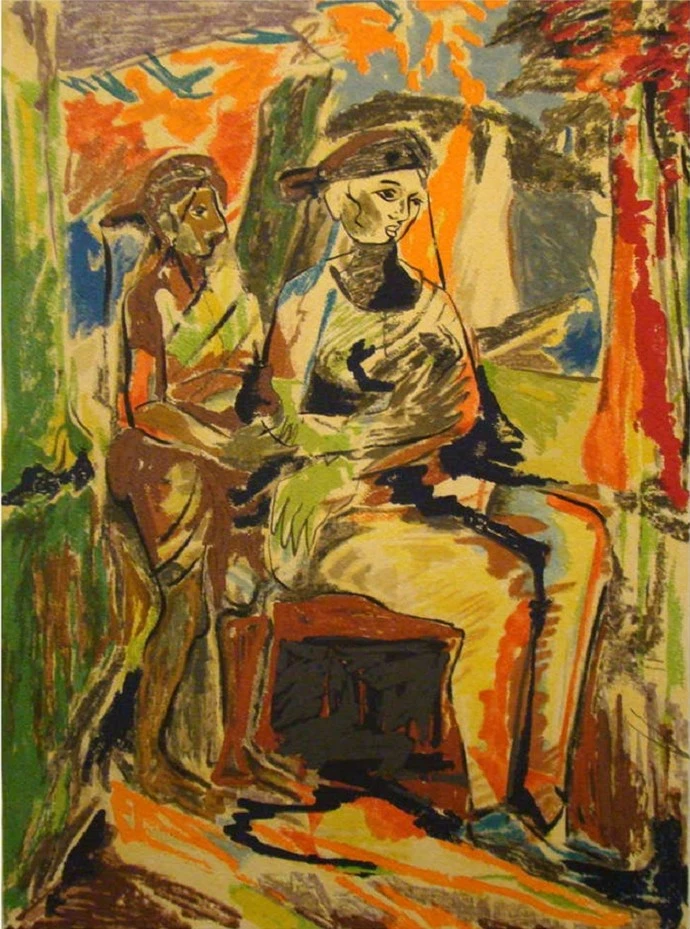 Mother and Child. Courtesy of psartworks.
Mother and Child. Courtesy of psartworks.
Though primarily known for his abstract paintings, Dave’s oeuvre also includes several figurative works which depict scenes from village life in Gujarat. This particular painting titled Mother and Child with its fascinating use of colour and expressionist imagery reminds one of the Die Brücke group of 20th-century German expressionists. Some of his abstract paintings also exhibited an expressionist bent to them. The Camel Ride is an apt example of this. From a distance, the work evokes a sense of confusion while pleasing the viewer with its thickly textured paint with the line separating the canvas into the mute brown and grey almost acting as the Barnett Newman zip. And yet when one gets closer, the contours of the camel and its rider become more salient.
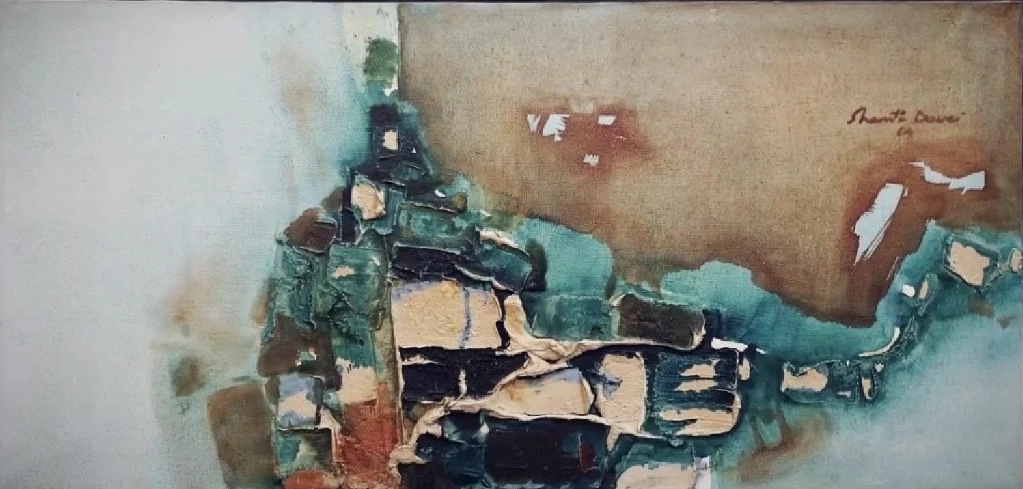 The Camel Ride. 1964. Courtesy of Belle Epoque Fine Art.
The Camel Ride. 1964. Courtesy of Belle Epoque Fine Art.
Another facet of his artistic journey also involves his conscious shift to printmaking later in his life given the medium’s democratic nature for both the artist – because of the possibility of greater textures it offered – as well as the buyer who could now afford his works.
Dave hardly speaks about his paintings. He also prefers to not title his works allowing them the liberty of traversing the interpretative worlds of the viewers who can choose to understand them in innumerable and often contradictory ways. It is precisely this quality that continues to captivate the audience and makes his work relevant in our times. The current exhibition at DAG is an attempt towards making Dave’s contribution to Indian art history and especially Indian modernism more conspicuous.
The exhibition will continue till 10th September, 2023.
References
- Forbes India: Why do artists move to abstracts
- DAG: Shanti Dave
- psartworks
- https://www.youtube.com/watch?v=_xzlaOIECw0&t=58s&pp=ygUSc2hhbnRpIGRhdmUgYXJ0aXN0
- https://www.youtube.com/watch?v=tA8QxeojUdY&pp=ygUSc2hhbnRpIGRhdmUgYXJ0aXN0
- https://www.youtube.com/watch?v=AC6jD0MYdwo&pp=ygUSc2hhbnRpIGRhdmUgYXJ0aXN0
Read More:
Shanti Dave: Celebrating India’s Pioneering Abstractionist in ‘Neither Earth Nor Sky’ Exhibition Click Here
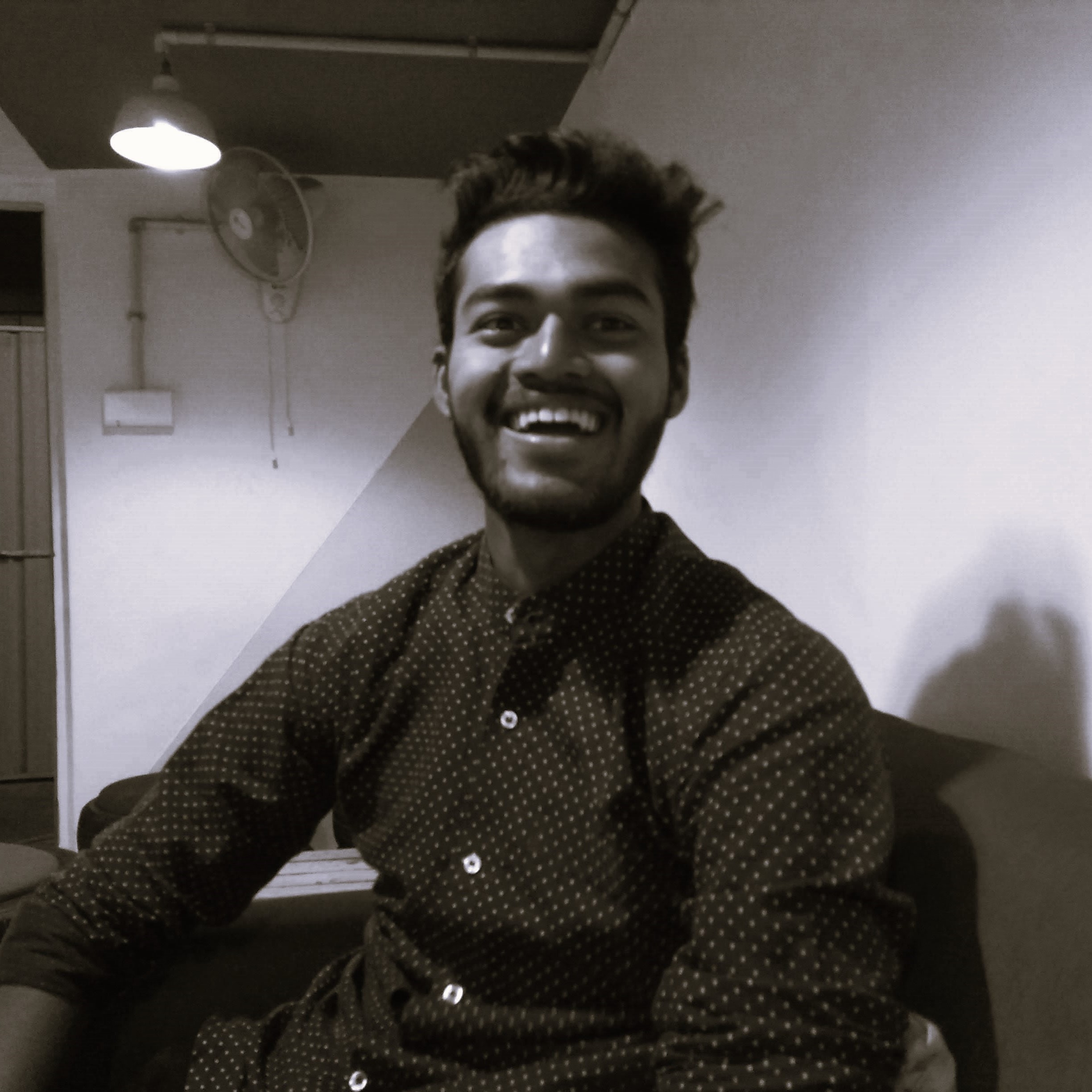
Contributor

